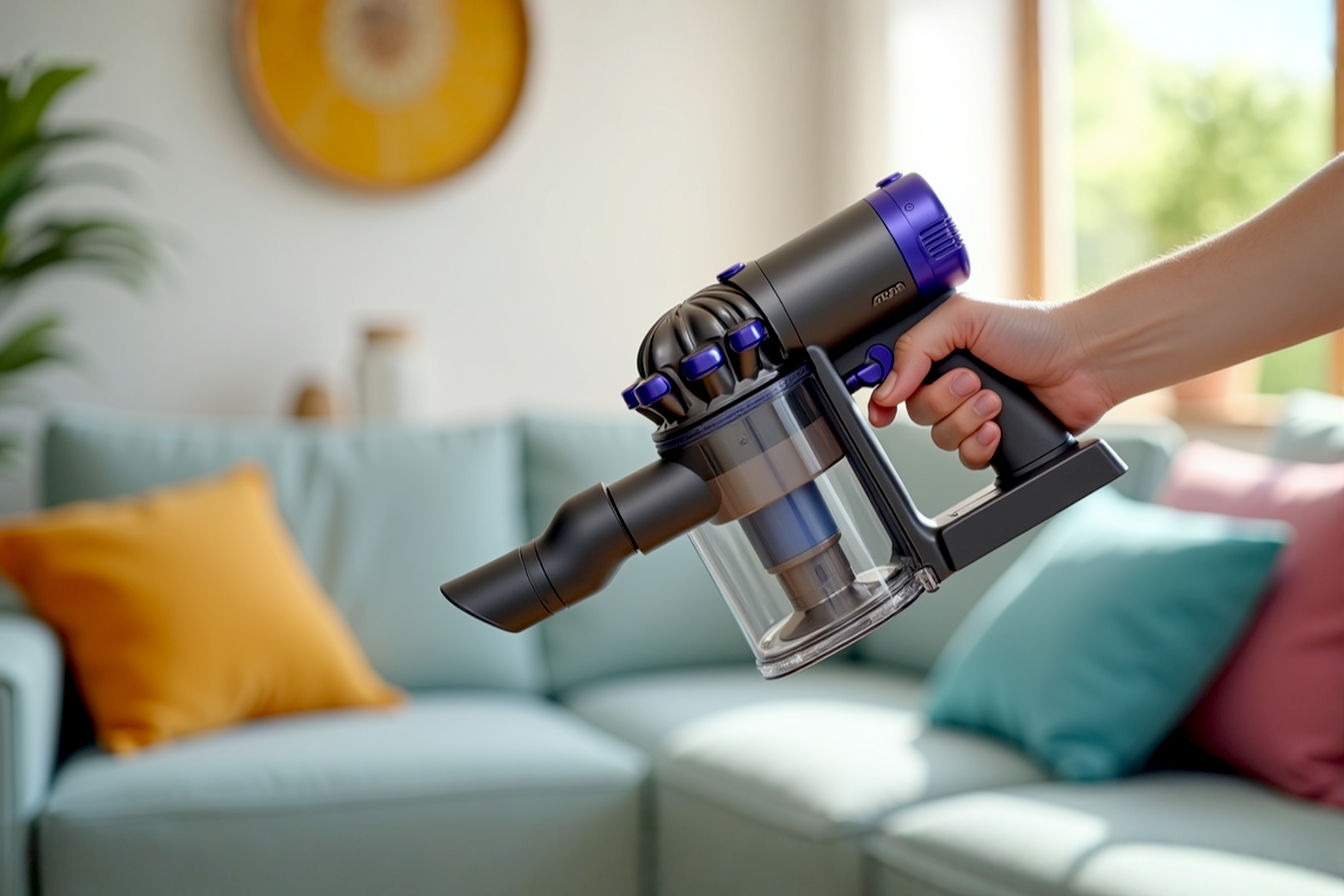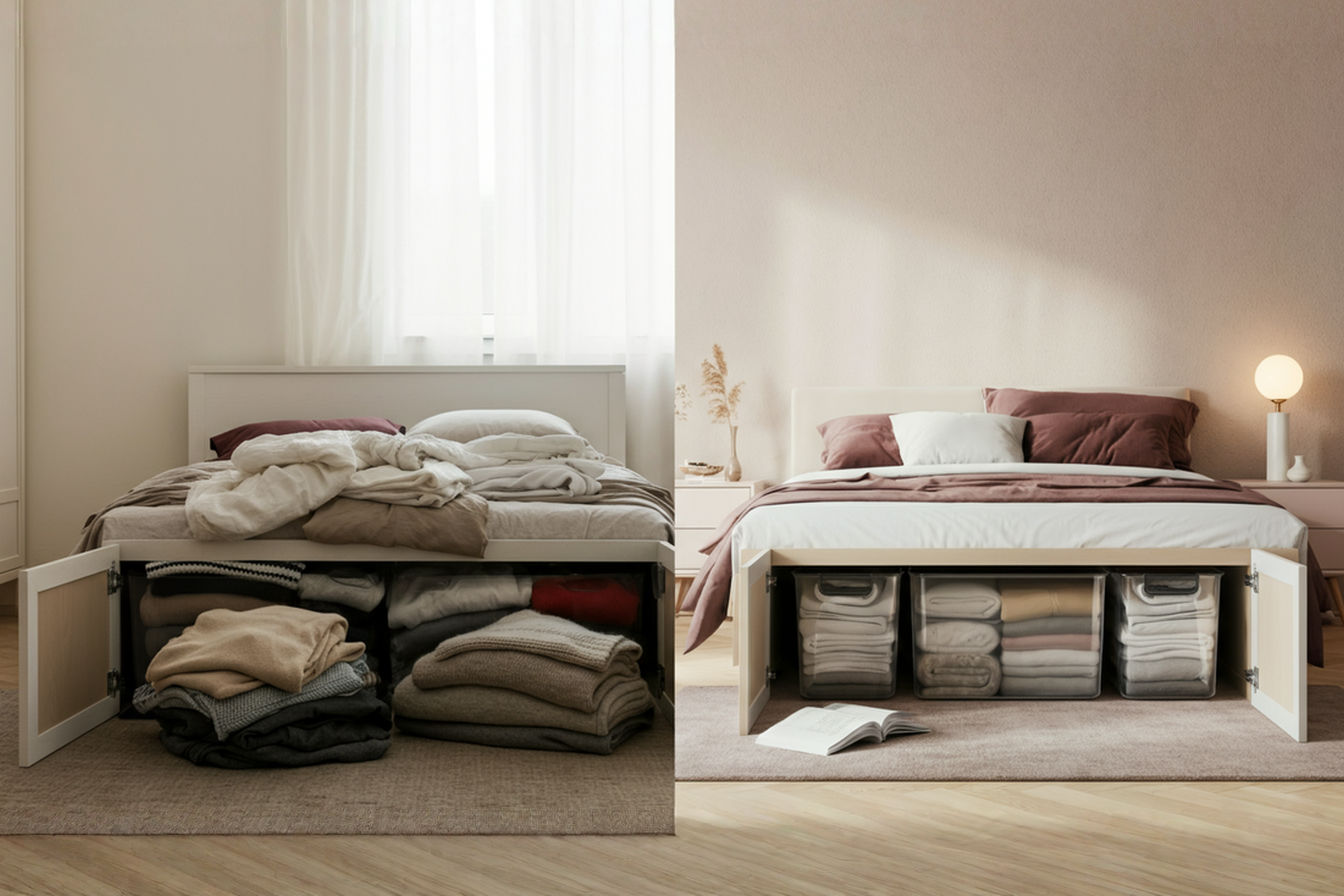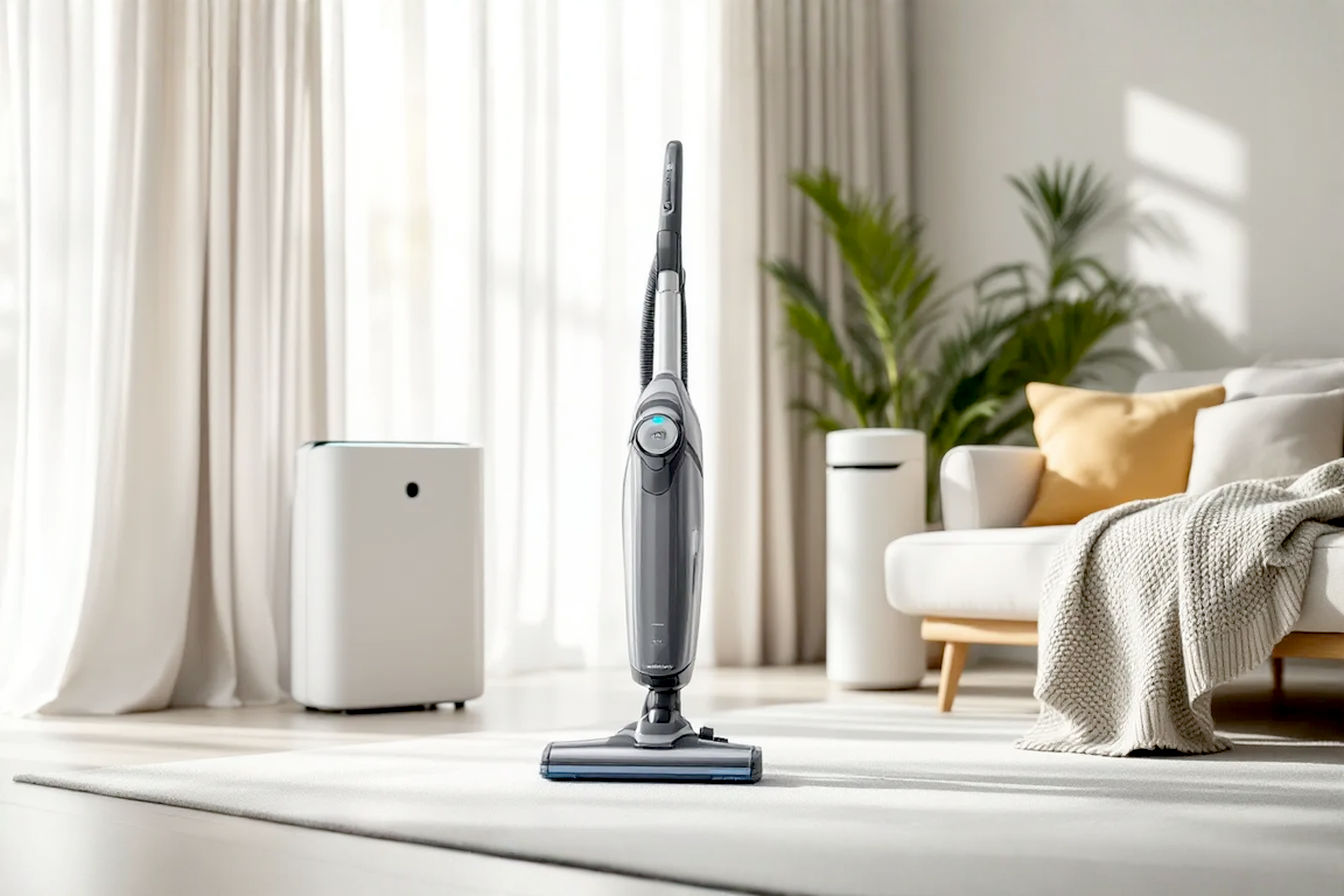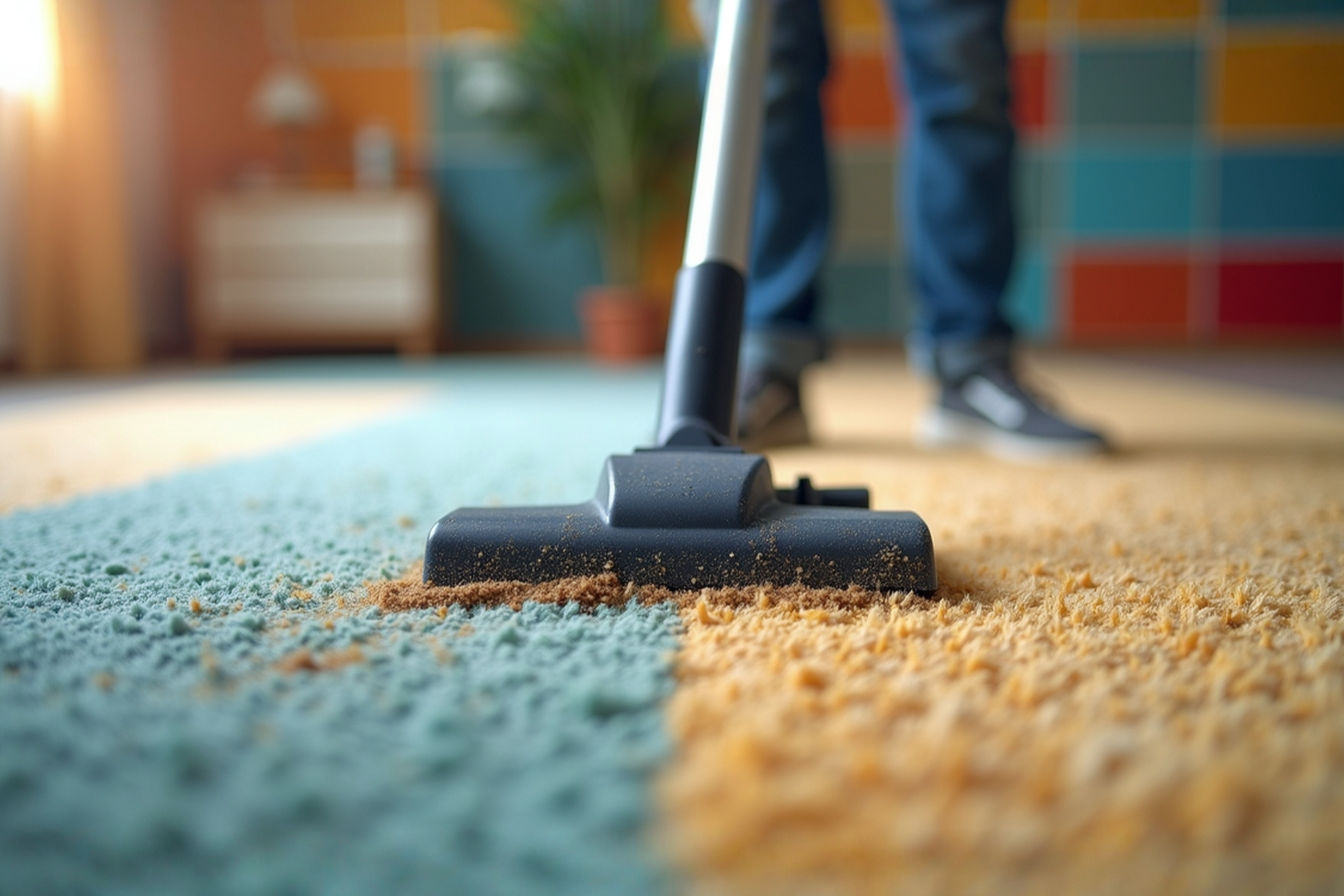Touch-Friendly Vacuum Selection: Models With Comfortable Grip and Operation
Find the perfect vacuum that won’t strain your hands or back. Our guide reveals which models offer the most comfortable grip, intuitive controls, and ergonomic design for effortless cleaning.
This post may contain affiliate links. If you make a purchase through these links, we may earn a commission at no additional cost to you.
Vacuuming is a household chore most of us perform regularly, but few consider how the design of these appliances affects our comfort and efficiency. The right vacuum can transform cleaning from a painful ordeal into a manageable task, especially for those with physical limitations or discomfort. With Americans spending an average of 6 hours per week cleaning their homes, the ergonomics of cleaning tools directly impacts quality of life.
Comfort matters when it comes to vacuum cleaners. A poorly designed vacuum can cause hand cramping, wrist strain, back pain, and general fatigue—turning a 20-minute cleaning session into hours of discomfort afterward. Thankfully, manufacturers have begun prioritizing user comfort alongside suction power and filtration.
In this comprehensive guide, we’ll explore what makes a vacuum truly touch-friendly, examine the most comfortable models available today, and provide guidance for selecting a vacuum that won’t leave you in pain. Whether you’re dealing with arthritis, recovering from an injury, or simply want a more pleasant cleaning experience, this article will help you find a vacuum that feels as good as it cleans.
Understanding Vacuum Ergonomics
Ergonomics—the science of designing products that work efficiently with the human body—plays a crucial role in vacuum cleaner design. An ergonomically sound vacuum works with your natural movements rather than against them.
Vacuum ergonomics encompasses several key elements:
- Grip comfort: How the handle feels in your hand during extended use
- Weight distribution: How the vacuum’s mass is balanced during operation
- Control accessibility: The ease of reaching and operating buttons and settings
- Movement dynamics: How naturally the vacuum follows your cleaning motions
- Operational force: The amount of strength needed to push, pull, and maneuver
Poor ergonomic design leads to what experts call “compensatory movements”—when you twist your body awkwardly or use improper posture to accommodate a poorly designed tool. Over time, these compensations can lead to repetitive strain injuries and chronic pain.
According to physical therapist Dr. Karen Reynolds, “The vacuum cleaner you use should conform to your body’s needs, not the other way around. When selecting a vacuum, people should pay as much attention to how it feels in their hands as they do to its cleaning power.”
Key Features of Touch-Friendly Vacuum Cleaners
Handle Design and Materials
The vacuum handle is your primary point of contact with the machine, making its design paramount for comfort. Today’s most ergonomic vacuums feature:
- Contoured grips that follow the natural curve of your hand
- Soft-touch materials like rubberized polymers or silicone overlays that reduce pressure points
- Textured surfaces that prevent slipping without requiring a tight grip
- Proper diameter sizing (typically 1.25-1.5 inches) to accommodate various hand sizes
Premium models like the Shark APEX UpLight and Dyson V15 Detect incorporate specialized grip materials that absorb vibration and distribute pressure across your palm rather than concentrating it at specific points.
Weight Distribution and Balance
A vacuum’s weight matters less than how that weight is distributed. Well-balanced vacuums place the heaviest components (motors and dust collectors) closer to the floor or your center of gravity.
For upright vacuums, look for designs with:
- Motor placement near the cleaning head rather than the handle
- Battery location (in cordless models) positioned to counterbalance the cleaning apparatus
- Center of gravity that falls between your hands and the floor
Canister vacuums benefit from:
- Smooth-rolling wheels that turn easily with minimal force
- Adequate hose length to reduce dragging
- Body designs that naturally stay upright when pulled
Control Placement and Accessibility
Comfort extends beyond physical sensation to ease of operation. Touch-friendly vacuums feature:
- Thumb-accessible power switches that don’t require awkward reaching
- Intuitive control layouts with clear visual indicators
- Variable-height triggers that can be operated from multiple hand positions
- Large, easy-press buttons rather than small switches requiring precision
Several manufacturers have embraced one-touch operation systems where a single, easily accessible button controls multiple functions. The Bissell AirRam, for example, places all controls within thumb reach and requires minimal pressure to activate.
Vibration Reduction Technology
Vibration fatigue can cause hand numbness even with a well-designed grip. Advanced comfort models incorporate:
- Anti-vibration mounts that isolate the motor from the handle
- Dampening materials strategically placed to absorb operational tremors
- Balanced motor design that minimizes rotational vibration
The Miele Complete C3 Soft Carpet uses a specially designed motor suspension system that reduces handle vibration by up to 70% compared to standard models.
Cord Management Systems
For corded vacuums, easy cord handling significantly impacts user comfort:
- Auto-retractable cords eliminate manual winding
- Swivel cord guards prevent tangling during operation
- Strategic cord exit points that keep cords away from your feet
Maneuverability Features
How easily a vacuum moves affects the strain on your body:
- Swivel steering reduces wrist twisting when navigating around furniture
- Self-propelled mechanisms assist forward movement with minimal pushing
- Smooth transition between surfaces prevents jarring stops and starts
The Dyson Ball technology and Shark’s Zero-M swivel head are prime examples of design innovations that drastically reduce the physical effort needed to maneuver around obstacles.
Special Considerations for Different Users
Seniors and Elderly Users
As we age, grip strength naturally decreases and joint sensitivity increases. For seniors, these features become essential:
- Lightweight design under 10 pounds when possible
- Power-assist features for pushing and pulling
- Simple, high-contrast controls that are easy to see and understand
- Stable base design that stays upright without support
The Oreck Ultra Lightweight has maintained popularity among older users specifically because of its featherweight design (under 8 pounds) combined with a help-handle that reduces bending.
People with Arthritis or Hand Limitations
For the 54 million Americans living with arthritis, standard vacuum operation can be excruciating. Touch-friendly options for arthritis sufferers include:
- Trigger locks that maintain suction without continuous pressure
- Palm-activated controls rather than finger triggers
- Extra-wide handles that distribute gripping pressure
- Soft-start motors that prevent jarring start-up torque
The Arthritis Foundation has specifically recognized several vacuum models for their accessibility, including the Shark Navigator Lift-Away and certain Dyson models with redesigned triggers that require 50% less activation force.
Users with Back Problems
Back pain sufferers benefit from:
- Upright designs with extended handles that minimize bending
- Lightweight cleaning heads that don’t require lifting pressure
- Easy-empty systems that don’t require awkward dust bin removal
- Low-profile bases that can clean under furniture without stooping
Households with Multiple Users
Homes where different people share cleaning duties need vacuums with:
- Adjustable handle heights to accommodate different user heights
- Customizable power settings for varied strength levels
- Convertible formats that adapt to different user preferences
Types of Vacuum Cleaners and Their Ergonomic Profiles
Upright Vacuums: Comfort Considerations
Upright vacuums traditionally offer excellent cleaning power but mixed ergonomics. Look for:
- Self-propelled mechanisms that reduce pushing effort
- Handle-mounted controls for accessibility
- Quick-release wands for above-floor cleaning without awkward positions
- No-bend transitions between floor and attachment modes
The Shark Navigator Zero-M Self-Cleaning Brushroll exemplifies modern upright design with its lightweight body (under 15 pounds) and anti-hair-wrap technology that eliminates one of the most uncomfortable maintenance tasks.
Canister Models: Handling and Operation
Canister vacuums separate the motor unit from the cleaning head, offering:
- Reduced hand/arm weight since you’re only holding the wand
- Lower noise levels with the motor unit farther from your ears
- 360° hose connections that reduce wrist strain
- Ergonomic wand designs with comfortable grips
Miele’s canister models feature 360° rotation connections between the hose and wand that virtually eliminate wrist twisting while maneuvering.
Stick Vacuums: Lightweight Advantages
Stick vacuums have revolutionized comfort with:
- Ultra-lightweight designs (often under 7 pounds)
- Balanced weight distribution with motor placement near your hand
- Convertible designs that transform into handhelds for versatility
- Wall-mounted storage eliminating heavy lifting from storage areas
The LG CordZero and Samsung Jet stick vacuums feature ergonomic handgrips with weight balanced close to the user’s hand rather than extended away from the body, reducing lever-action fatigue.
Handheld Options: Grip-Optimized Designs
For spot cleaning, handheld vacuums should offer:
- Pistol grips that support natural wrist alignment
- Lightweight design under 4 pounds for extended use
- Balanced weight distribution between front and back
- Non-slip surfaces for secure handling
Robot Vacuums: Touch-Free Alternatives
For those with significant mobility limitations, robot vacuums provide:
- App-based control without physical interaction required
- Scheduled cleaning reducing manual intervention
- Self-emptying bases minimizing dust contact
- Voice command compatibility for truly hands-free operation
Advanced models like the iRobot Roomba j9+ with Clean Base can operate for weeks without physical interaction, making them ideal for users with severe hand limitations.
Top Touch-Friendly Vacuum Models in 2025
Best Overall Ergonomic Designs
- Shark Vertex Pro PowerFins (HZ3000) – Features a self-propelled system with fingertip controls and multi-flex technology for comfortable under-furniture cleaning without bending.
- Dyson V15 Detect Absolute – Balanced design with torque-responsive motor, acoustic dust sensing to reduce unnecessary trigger holding, and a laser dust detection system that minimizes redundant movements.
- Miele Triflex HX2 Pro – Three-in-one configuration allows users to customize weight distribution based on their comfort needs and cleaning scenario.
Lightweight Champions with Comfortable Grips
- Oreck Elevate Control – Ultra-lightweight at 7.2 pounds with an ergonomically designed handle featuring Microban antimicrobial protection and a cushioned grip zone.
- LG CordZero A9 Ultimate – Weighing only 5.63 pounds with a balanced design and an adjustable telescopic wand to match user height.
- Eureka FloorRover Dash – 10-pound upright with swivel steering and an ergonomic handle that reduces wrist strain during extended cleaning sessions.
Models with Innovative Touch Controls
- Samsung Bespoke Jet AI – Features a digital touch display with customizable settings and an AI-powered motor that automatically adjusts suction based on floor type and debris level.
- Tineco Pure One S15 Pro – Smart sensor technology automatically adjusts suction power, while its LED display provides visual feedback, eliminating the need to bend down and check cleaning status.
- Dyson Gen5detect – Touch-sensitive button controls replace traditional triggers, requiring minimal pressure to operate.
Budget-Friendly Options with Good Ergonomics
- Bissell CleanView Swivel Rewind Pet – Offers a swivel steering system and automatic cord rewind under $150.
- Hoover WindTunnel 3 Max Performance – Features an ergonomic handle with fingertip controls and weighs under 15 pounds with multi-cyclonic filtration.
- Shark Navigator Lift-Away Deluxe – Detachable pod allows for multiple carrying configurations to match user comfort preferences, typically available under $200.
Premium Models with Advanced Comfort Features
- Miele Complete C3 Brilliant – Features an illuminated comfort handle with integrated controls, SoftCarpet setting that reduces pushing effort, and HEPA filtration.
- Dyson Outsize+ Absolute – Extra-large cleaning head reduces cleaning time while maintaining excellent ergonomics and featuring a laser illumination system that reduces repetitive motions.
- Sebo Automatic X7 – Computer-controlled head height adjustment eliminates manual adjustments, with a unique S-Class filtration system and hospital-grade cleaning capability.
Specific Comfort Features to Look For
Cushioned Handles and Grips
The material quality of grip surfaces dramatically affects comfort. Look for:
- Memory foam inserts that conform to your hand shape
- Gel cushioning that absorbs vibration during operation
- Contoured finger recesses that guide proper hand positioning
- Hypoallergenic coating for sensitive skin
The premium Sebo Felix features a comfort grip handle with elastomer material that provides a secure hold without requiring tight gripping.
Adjustable Height Settings
One size doesn’t fit all when it comes to vacuum operation. Seek models with:
- Telescoping wands that adjust to your height
- Multiple handle positions for different cleaning scenarios
- Quick-adjust mechanisms that don’t require tools
Touch-Sensitive Controls
Modern control systems enhance user experience through:
- Capacitive touch panels that respond to light contact
- Slider controls for variable power adjustment
- Smart touch surfaces that can be operated with any part of the hand
- LED feedback that confirms your selections
The Dyson V12 Detect Slim features a single-touch power button rather than a trigger, allowing users to activate the vacuum without maintaining continuous pressure.
Swivel Steering Mechanisms
Advanced steering technology dramatically reduces the physical effort of vacuuming:
- Ball technology pioneered by Dyson enables 360° movement
- Articulating neck joints allow the cleaning head to follow natural wrist movements
- Low-friction wheel designs reduce pushing resistance
Self-Propelled Technology
Motor-assisted movement represents a significant ergonomic advancement:
- Variable-speed drive systems match your walking pace
- Intuitive control mechanisms that respond to gentle pushing pressure
- Reverse assistance for pulling the vacuum backward
The Kenmore Elite Pet Friendly UltraPlush includes PowerDrive technology that provides forward assistance on both hard floors and carpets, reducing user effort by up to 50%.
Easy-Empty Dust Bins
The end of cleaning shouldn’t strain your hands:
- One-touch emptying systems that release dust with minimal contact
- Bottom-empty designs that use gravity rather than manual shaking
- Self-cleaning filter systems that reduce maintenance handling
Dyson’s “point and shoot” hygiene system allows users to empty the bin directly into trash with a simple sliding mechanism, eliminating the need to pull or grasp debris.
Quick-Release Attachments
Accessory management should enhance rather than complicate cleaning:
- Tool-free attachment systems that don’t require fine motor skills
- Onboard storage that keeps accessories within easy reach
- Color-coded attachment systems for intuitive identification
Maintenance Considerations for Long-term Comfort
Filter Accessibility and Cleaning
Even the most comfortable vacuum can become problematic if maintenance causes pain:
- Washable filters with easy access doors
- Filter indicator lights that prevent unnecessary checking
- Long-life filters that reduce replacement frequency
- Quick-release filter housings without small tabs or tight-fitting parts
The Kenmore Intuition features a AllergenSeal system with a HEPA filter that can be accessed and changed with a simple quarter-turn mechanism, eliminating the need for precise finger manipulation.
Brush Roll Maintenance Made Easy
Brush roll cleaning traditionally involves bending, cutting, and pulling—all problematic for those with hand limitations:
- Self-cleaning brush rolls like Shark’s Zero-M technology
- Quick-release roll removal without tools
- Tangle-free design that prevents hair wrapping
Battery Replacement Ergonomics (for Cordless Models)
For cordless vacuums, battery management should be straightforward:
- Slide-in battery packs rather than screw-mounted compartments
- Lightweight battery design for easy handling during charging
- Multiple charging options including wall mounts and stands
The Dyson V-series and LG CordZero models feature click-in battery packs that require no tools or fine manual dexterity to replace.
Storage Solutions that Reduce Strain
Storage design affects the long-term usability of your vacuum:
- Self-standing capabilities that eliminate awkward leaning
- Wall-mount systems that don’t require lifting
- Folding handles for compact storage
- Docking stations with integrated charging
How to Test Vacuum Comfort Before Purchasing
In-Store Testing Strategies
When shopping in person:
- Hold the vacuum in operating position for at least 30 seconds
- Try all the controls while holding the handle naturally
- Test the weight by lifting as you would at home
- Push and pull on various surfaces if demonstrations are allowed
- Pay attention to sound levels as noise contributes to user fatigue
Online Research Techniques
When shopping online:
- Search specifically for reviews mentioning “comfort,” “ease of use,” or “ergonomics”
- Look for video reviews that demonstrate the vacuum in action
- Check the weight specifications and compare to your current vacuum
- Research return policies in case the comfort doesn’t meet expectations
Return Policies to Consider
Given the personal nature of ergonomic comfort, prioritize retailers offering:
- Extended trial periods (30+ days ideally)
- Free return shipping for online purchases
- No-questions-asked policies regarding comfort satisfaction
What User Reviews Reveal About Comfort
When researching user experiences:
- Filter reviews by people with similar needs (arthritis, back pain, etc.)
- Look for consistent mentions of specific comfort features
- Note any recurring complaints about particular aspects of operation
- Pay attention to long-term reviews as comfort issues often emerge after extended use
Future Trends in Vacuum Ergonomics
Smart Home Integration and Voice Control
The ultimate in touch-friendly operation removes physical interaction entirely:
- Voice command capabilities through smart home systems
- Scheduled cleaning routines via smartphone apps
- Remote operation for users with limited mobility
The Samsung Jet Bot AI+ responds to voice commands through SmartThings integration and can be controlled entirely through a smartphone app, eliminating physical handling requirements.
Lighter Materials Development
Material science continues to improve comfort through:
- Carbon fiber components reducing overall weight
- Aerospace-grade plastics providing strength without mass
- Magnesium alloy frames offering durability with minimal weight
Self-Cleaning Technologies
Reducing maintenance handling improves long-term user experience:
- Anti-tangle brush designs that shed hair automatically
- Self-emptying dust bins that transfer debris to larger containers
- Filter-cleaning mechanisms that maintain suction without user intervention
Adaptive Handle Technology
Next-generation grip design includes:
- Pressure-sensitive handles that adapt to grip strength
- Temperature-regulating materials for comfortable holding
- Biometric grip recognition for personalized settings
Conclusion
Selecting a touch-friendly vacuum cleaner goes beyond suction power and filtration—it’s about finding a machine that works harmoniously with your body. The right ergonomic design can transform vacuuming from a painful chore into a manageable task, particularly for those with physical limitations.
When evaluating vacuums, prioritize comfort features that address your specific needs. Consider weight distribution, handle design, control accessibility, and maintenance requirements alongside cleaning performance. Remember that the “best” vacuum is the one you can use comfortably and consistently.
The market now offers more ergonomic options than ever before, from lightweight stick vacuums to self-propelled uprights and hands-free robots. By understanding the key comfort factors outlined in this guide, you can select a vacuum that cleans effectively without causing pain or fatigue.
Your home deserves to be clean, and your body deserves to feel good while cleaning it. With the right touch-friendly vacuum, you can achieve both.







